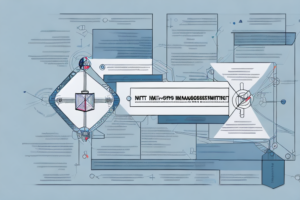What is security control baseline analysis plan in RMF?

A security control baseline analysis plan
In today’s world, cyber threats are constantly evolving, which makes it essential for organizations to develop an effective security strategy to protect themselves from malicious attacks. A key component of any such strategy is understanding risk management. Risk management frameworks are used to identify, assess, and prioritize risks that organizations may face, and develop strategies to mitigate those risks. The Risk Management Framework (RMF) is a well-established risk management approach used by government agencies and organizations worldwide.
Understanding the basic principles of RMF
The RMF provides a structured approach to risk management that helps organizations manage information security risks in a consistent, standardized manner. The framework is based on six key steps, which include categorization, selection, implementation, assessment, authorization, and continuous monitoring. Each of these steps is designed to help organizations identify and manage risks effectively.
One of the key benefits of using the RMF is that it allows organizations to tailor their risk management approach to their specific needs and requirements. This means that organizations can prioritize their resources and focus on the areas that are most critical to their operations. Additionally, the RMF provides a common language and methodology for risk management, which can help facilitate communication and collaboration between different departments and stakeholders within an organization.
What are security control baselines and why are they important?
Security control baselines are a set of security controls that an organization has identified as necessary to achieve a specific level of security. They are essential for ensuring that the organization’s security posture is adequate and that critical assets are properly protected. A security control baseline analysis plan is the process of evaluating these controls to ensure that they meet the organization’s security needs. It helps organizations identify gaps or deficiencies in their security posture and develop effective strategies to address those gaps. Ultimately, a security control baseline analysis plan helps organizations achieve a higher level of security by ensuring that they have the right controls in place to protect their critical assets.
It is important to note that security control baselines are not a one-time solution. As technology and threats evolve, organizations must regularly review and update their security control baselines to ensure that they remain effective. This requires ongoing monitoring and assessment of the organization’s security posture, as well as a commitment to implementing new controls and strategies as needed. By maintaining a strong security control baseline, organizations can better protect themselves against cyber attacks and other security threats, and ensure the safety and security of their critical assets.
The role of security control baseline analysis in RMF
The security control baseline analysis plan plays a critical role in the RMF process. It helps organizations identify the security controls that are necessary to achieve their security objectives. This information is used to inform the selection and implementation steps of the RMF process. During the assessment phase, the effectiveness of the security controls is evaluated to ensure that they meet the organization’s security needs. This information is then used to authorize the system for operation and perform continuous monitoring to ensure ongoing compliance with security requirements. Throughout the entire RMF process, the security control baseline analysis plan plays an essential role in ensuring that the organization’s security posture is adequate.
One of the key benefits of conducting a security control baseline analysis is that it helps organizations identify potential security risks and vulnerabilities. By analyzing the current security controls in place, organizations can identify areas where additional controls may be needed to mitigate risks and improve overall security. This proactive approach to security can help organizations stay ahead of potential threats and minimize the impact of security incidents. Additionally, the security control baseline analysis can be used to inform future security planning and decision-making, ensuring that the organization’s security posture remains strong and effective over time.
Key components of a security control baseline analysis plan
A security control baseline analysis plan should include several key components, such as identification of critical assets and business processes, determination of the appropriate security controls, and the development of processes to ensure ongoing compliance with those controls. The plan should also include documentation of the specific security controls that have been selected, as well as procedures for assessing the effectiveness of those controls.
Another important component of a security control baseline analysis plan is the establishment of roles and responsibilities for implementing and maintaining the security controls. This includes identifying who will be responsible for monitoring and enforcing compliance with the controls, as well as who will be responsible for responding to security incidents and breaches.
In addition, the plan should include a risk assessment that identifies potential threats and vulnerabilities to the critical assets and business processes. This assessment should be used to inform the selection of appropriate security controls and to prioritize their implementation based on the level of risk they address. Regular updates to the risk assessment should also be included in the plan to ensure that the security controls remain effective over time.
How to develop an effective security control baseline analysis plan in RMF
To develop an effective security control baseline analysis plan, organizations must first identify their critical assets and business processes. They must then determine the appropriate security controls to protect those assets and develop a process for ongoing compliance with those controls. Organizations must also ensure that their security control baseline analysis plan aligns with the RMF process. This involves following the six steps of the RMF process and integrating the results of the security control baseline analysis plan into this framework.
It is important for organizations to regularly review and update their security control baseline analysis plan to ensure that it remains effective and relevant. This can be done by conducting regular risk assessments and vulnerability scans, as well as staying up-to-date with the latest security threats and trends. Additionally, organizations should involve all relevant stakeholders in the development and implementation of the plan, including IT staff, security personnel, and business leaders. By taking a comprehensive and collaborative approach to security control baseline analysis planning, organizations can better protect their critical assets and ensure ongoing compliance with regulatory requirements.
Common challenges in implementing a security control baseline analysis plan
Implementing a security control baseline analysis plan in RMF can be challenging for organizations, particularly those with complex IT environments. Common challenges include lack of resources, disparate security processes and tools, and difficulty in achieving buy-in from stakeholders. Organizations must overcome these challenges to ensure the effectiveness of their security control baseline analysis plan.
Best practices for conducting a successful security control baseline analysis plan in RMF
To ensure the success of a security control baseline analysis plan in RMF, organizations should follow several key best practices. These may include establishing a clear understanding of business objectives and security requirements, identifying and prioritizing critical assets, and conducting continuous monitoring to detect and respond to security incidents proactively. Additionally, organizations should ensure that their security control baseline analysis plan aligns with industry best practices and standards to maintain effective security posture.
Integrating the results of a security control baseline analysis plan into your overall risk management strategy
The results of a security control baseline analysis plan in RMF should be integrated into an organization’s overall risk management strategy. This involves using the results of the analysis to inform the selection and implementation of security controls. Additionally, the results of the analysis should be used to prioritize risk mitigation efforts and ensure ongoing compliance with security requirements.
Examples of successful implementation of security control baseline analysis plans in various industries
Successful implementation of security control baseline analysis plans in RMF has been demonstrated in various industries. Examples include government agencies, financial institutions, and healthcare organizations. These organizations have successfully used the framework to identify, assess, and prioritize risks, and develop effective strategies to mitigate those risks.
Common misconceptions about security control baseline analysis plans in RMF
There are several common misconceptions about security control baseline analysis plans in RMF. One of the most common is the belief that a one-size-fits-all approach can be used to develop an effective plan. However, each organization’s IT environment is unique, and therefore requires a tailored approach. Another misconception is that security control baseline analysis plans are only necessary for government agencies or organizations that handle classified information. However, all organizations, regardless of industry or size, must protect their critical assets from cyber threats and should therefore implement a security control baseline analysis plan.
Future trends and developments in the field of security control baseline analysis in RMF
The field of security control baseline analysis in RMF is constantly evolving, and there are several trends and developments to watch in the coming years. One of these is the increasing use of automation to streamline the security control baseline analysis process. Additionally, there is likely to be greater emphasis on the use of threat intelligence to inform the selection and implementation of security controls. Finally, organizations can expect to see greater integration of security control baseline analysis plans into the overall risk management strategy, as well as increased collaboration between security and business teams.
Conclusion
The security control baseline analysis plan is a critical component of the RMF process. It helps organizations identify and prioritize risks and develop effective strategies to mitigate those risks. To develop an effective security control baseline analysis plan, organizations must identify their critical assets and business processes, determine the appropriate security controls, and develop a process for ongoing compliance. By following best practices and integrating the results of the analysis into the overall risk management strategy, organizations can ensure effective security posture and ongoing protection of their critical assets.



